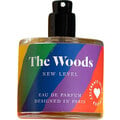
You’ll need to avoid generic, vague reports that don’t give specific insights into your clients and their progress. It’s important to write up your notes for each session. That thought space can then be redirected into improving the quality of your observations and ensuring that your note-taking is accurate. It will also prevent extra thinking work where you’re constantly having to check whether you’ve covered all the necessary information.
Soap notes full#
A quick web search will return plenty of different templates that can be adapted to your specific needs and approach.įollowing a template is going to keep you on track, organised and help you stay focused on your clients, even if you have a full schedule of clients. Let’s get practical:Ī good way to ensure the focus stays on the client’s goals, while effectively documenting your sessions, is to use a SOAP template. These goals should meet the SMART criteria of being Specific, Measurable, Attainable, Relevant, and Time-Based, and should be a mix of short-term and long-term goals. To get the best results from your sessions, it’s important to set specific goals for each client. Use a Template That is Focused on Client Outcomes With that outline in mind, let’s take a look at the top nine tips that are going to have the most significant impact on the quality of your SOAP notes: 1. Instead, it’s an opportunity to identify the immediate next steps to take to move your client closer to their goals. You don’t need to re-work the entire treatment plan in this section because your client’s goals have already been defined. In this last section, you need to outline the next steps in the treatment, and changes you are making to the program. Rather, it’s a chance to take a step back and assess whether they are making progress and if there are factors that might be impacting this progress. This information should be different to what you’ve covered in the Subjective and Objective sections.

You should also compare their performance in this session to previous appointments. In the assessment section, you will document your interpretation of the session, your client’s progress, as well as their strengths and areas for improvement.

And don’t go into too much detail when describing the activities in the session. You should avoid general statements that you can’t support with data. This may include any goals that are achieved, scores, and other quantitative information. Here you will document the measurable outcomes of your client’s performance. Only include relevant information that covers your client’s mood, motivation, and willingness to participate in the session. This section should include any comments, concerns, or queries raised by your client or their caregiver.Īvoid statements that you can’t support with facts.

These are your impressions of the client supported by facts that you have observed including feelings, performance, and interactions. They’re written in the past tense and should be focused, informative, and brief.

SOAP is an acronym that refers to a style of note-taking that is widely used by healthcare professionals around the world. While everyone has their own approach, reviewing our top nine tips for documenting your sessions could offer some insights to help to refine your note-taking (and you might even find some important time-saving tips that will improve your efficiency!) What are SOAP Notes? They are also often needed for reimbursement from medical insurance companies, and will form an important part of your defence if you are reviewed by your profession’s board or involved in a lawsuit. SOAP notes are invaluable for informing caregivers and other therapists about your client and their journey. You might be writing so many notes that you’ve forgotten why they’re so important. If you start by looking at the purpose of SOAP notes for speech therapy, it’s easier to stay focused on writing value-adding information. It’s easy to fall down a rabbit hole trying to work out the best approach and that inevitably leads to feelings of overwhelm. If you’ve ever moved to a different speech therapy practice, or read another speech therapist’s SOAP notes, you’ll know exactly what we’re talking about when we say everyone does them differently.


 0 kommentar(er)
0 kommentar(er)
